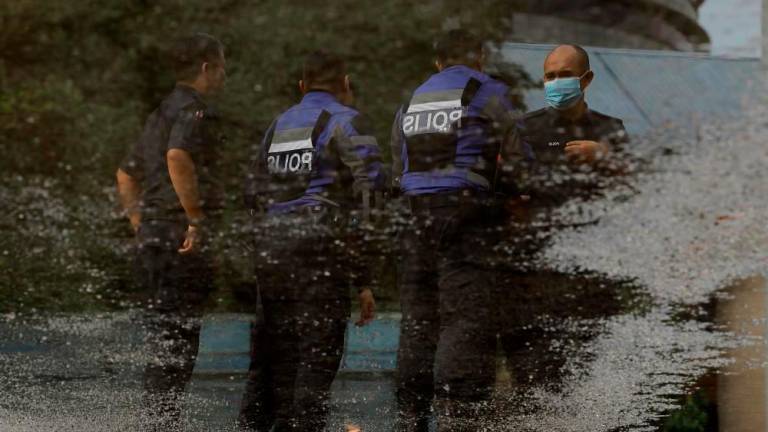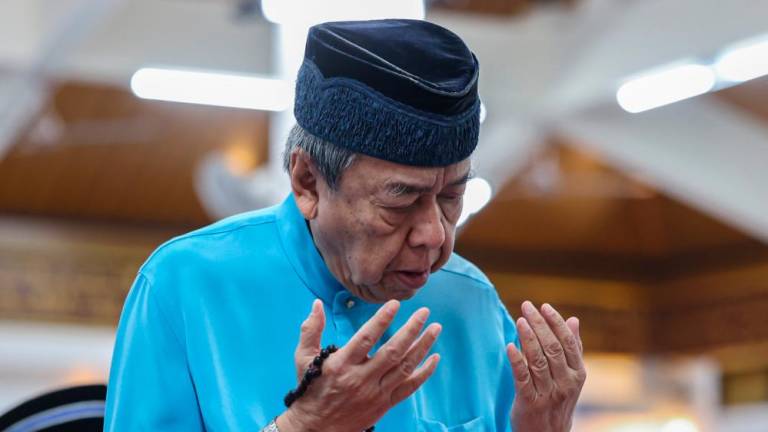IN the Tanjung Piai by-election, two sets of figures are intriguing. On Nov 16, Pakatan Harapan lost Tanjung Piai by a majority of 15,086 votes. This was a massive swing in a Johor parliamentary seat won by 524 votes during the 14th general election held on May 9 last year.
Within 18 months, PH’s component party Bersatu saw its vote tally plummet from 21,255 votes in May last year to 10,380 votes in November this year – a plunge of 51.2% and 10,375 ballots.
Contesting on behalf of Barisan Nasional, MCA candidate Datuk Seri Wee Jeck Seng saw his popularity accelerate from 20,731 votes last May to 25,466 in November this year – a rise of 23.2% or 4,735 ballots.
What is the reason for the discrepancy between the number of votes PH lost and the number MCA gained?
One major factor is voters’ abstention. Although 21,255 Tanjung Piai denizens cast their ballots for PH in May last year, in the recent by-election 6,133 residents stayed at home.
Their abstention is significant. Last year’s general election was held on a Wednesday, a working day, while the by-election was held on a Saturday. Although Saturday is a working day in Johor, for those living in Singapore or the Klang Valley, Saturday is either a half-day or an off day.
That 13.6% of voters chose to stay at home in the by-election reflects disenchantment with PH that wasn’t strong enough to prompt them to vote for BN.
Support for Wee was also boosted by PAS. In May last year, PAS won 2,962 votes; in November this year, the party declined to contest and announced its support for MCA. Assuming those who voted for PAS last May switched their support to Wee, the number of additional votes he siphoned from PH in the by-election was just 1,773 votes.
High voter abstention and the swing in support against the ruling coalition reflect voter dissatisfaction with PH. While congratulations are in order for MCA and BN, statistical analysis suggests this by-election victory shouldn’t be over-hyped, that caution about future electoral prospects is warranted.
First, Tanjung Piai is a by-election. Since the outcome didn’t affect political control at state or federal level, voters were free to vent their dissatisfaction. In a general election, voters may adopt a more nuanced stance.
Second, Tanjung Piai was won by a wafer-thin margin last year. Additionally, the constituency is in Johor, the birthplace of Umno and traditionally a BN stronghold.
Third, Tanjung Piai had a high proportion of Chinese voters. Although it is a Malay majority seat – with Malays comprising 57% of the constituency’s 53,000 voters – the Chinese account for 42% of the electorate.
In Tanjung Piai, the biggest change in sentiment was among Chinese voters.
Analysis by Bridget Welsh, honorary research associate of the University of Nottingham, Malaysia’s Asia Research Institute based in Kuala Lumpur, shows the largest drop in turnout – an estimated 27.6% – was among Chinese voters. What is noteworthy is the comparable figure for Malay voters was an estimated 3.8%, Welsh says.
Writing in Malaysiakini, Nigel Aw believes protest votes in Tanjung Piai cut across all racial groups. PH lost in all 27 polling districts in the by-election compared with the 11 polling districts it won in May last year, Aw notes.
Declining support for PH among Chinese voters was steeper compared with Malay voters, Aw concedes. In polling districts where the Chinese make up more than 80% of constituents, the decline ranged from 27% to 38% while polling districts with more than 80% Malay voters, PH’s support fell moderately by 2% to 12%.
Aw cites two polling districts as examples. In Malay-majority Pengkalan Raja Pontian, PH’s share of votes tumbled by 10.65 percentage points to 19.45%, one of the worst in a Malay-majority polling district, he points out.
More dramatic was the outcome in Chinese-majority Bandar Pekan Nenas Timur. Previously a safe seat for DAP – PH’s second largest component party – its share of the vote plummeted from 72.15% to 34.14%. Conversely, support for MCA went up from 39.62% to 63.37%.
Aw’s statistical analysis underscore Chinese voters’ monumental disappointment with DAP. Before Tanjung Piai, DAP appeared to have a hammerlock on Chinese voters’ support.
One salient fact needs to be remembered – parliamentary constituencies with 30% Chinese voters or more are few in number. Out of 165 parliamentary constituencies in Peninsular Malaysia (excluding Labuan), Chinese voters are the majority in 24 parliamentary seats while another 27 constituencies are mixed seats where no single ethnic group comprises 50% or more of voters.
Tanjung Piai’s results suggest Malay support for PH and Bersatu, although diminished, hasn’t suffered a knock-out blow. Despite widespread disaffection, particularly among Chinese voters, Tanjung Piai underscores one inalienable fact – this is still a country dominated by Malay voters and their heartfelt issues.
Opinions expressed in this article are the personal views of the writer and should not be attributed to any organisation she is connected with. She can be contacted at siokchoo@thesundaily.com













